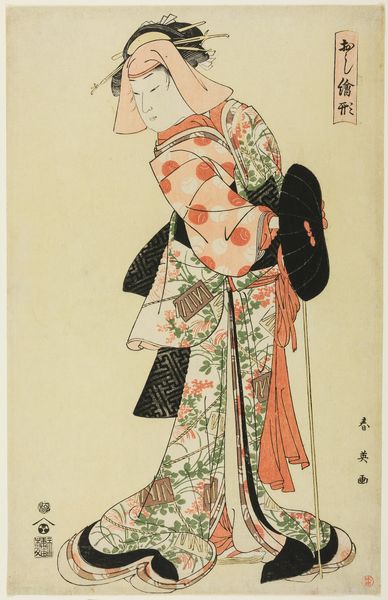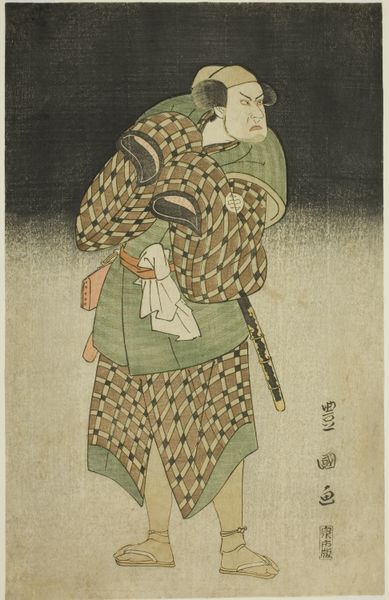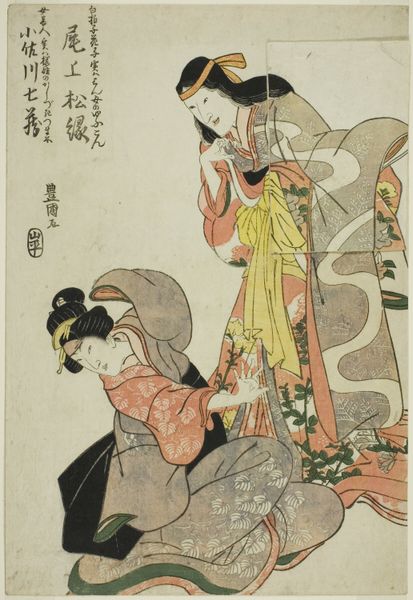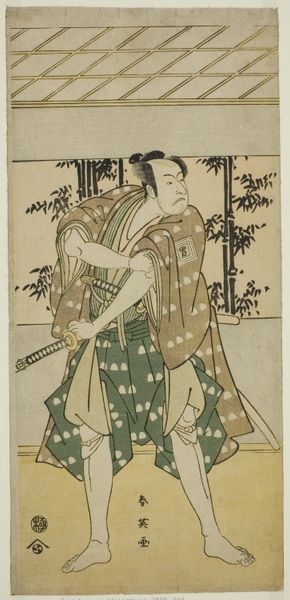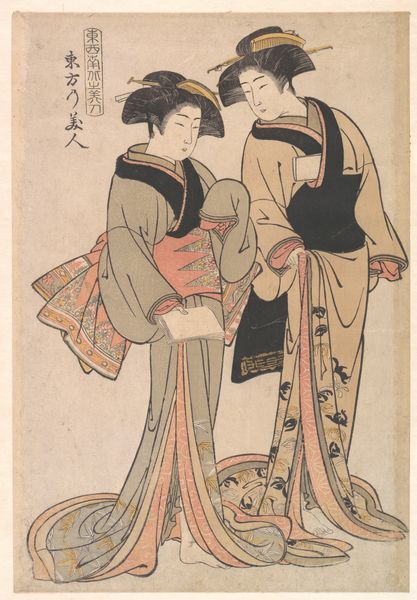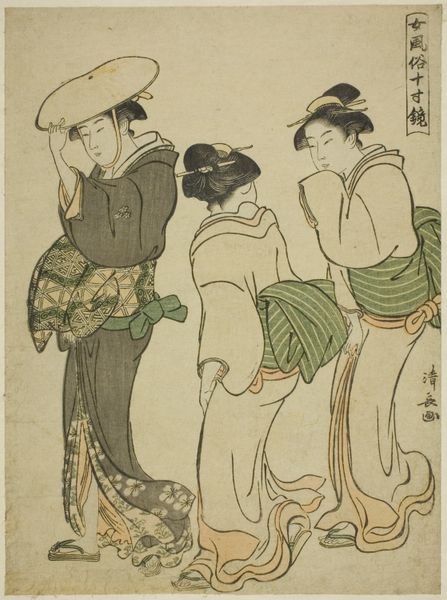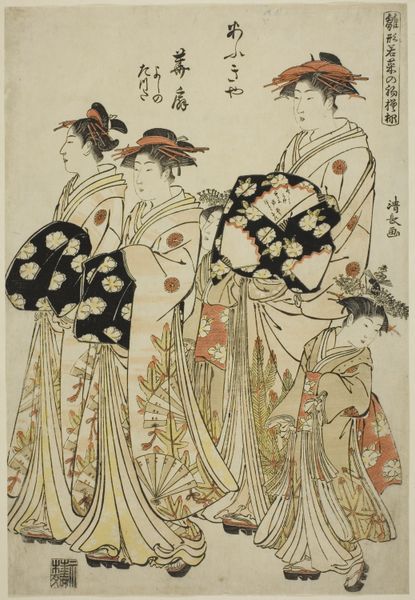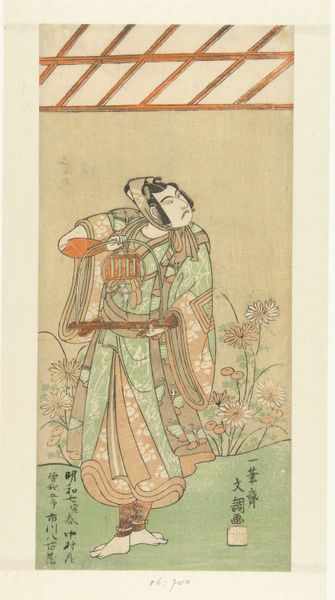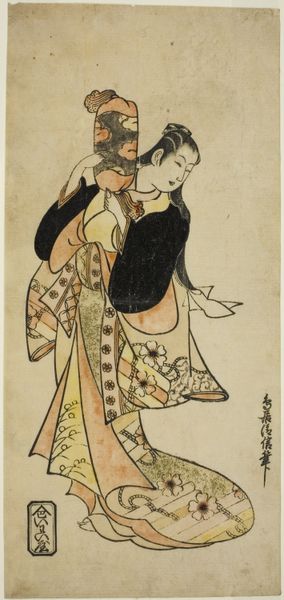
The Actors Onoe Kikugoro I and Sanogawa Ichimatsu I dressed as mendicant monks (komuso) c. 1749
0:00
0:00
#
portrait
# print
#
asian-art
#
ukiyo-e
#
figuration
Dimensions: 37.8 × 24.8 cm (14 7/8 × 9 3/4 in.)
Copyright: Public Domain
Curator: I find the linear quality in this Japanese print quite striking—the subdued palette contributes to an overall quiet tone. Editor: Indeed. What we have here is a woodblock print dating from around 1749 by Ishikawa Toyonobu. It depicts the actors Onoe Kikugoro I and Sanogawa Ichimatsu I dressed as mendicant monks, known as komuso. Curator: Mendicant monks, you say? Yet their garments suggest otherwise, crafted of intricately patterned fabrics... Clearly not simple robes for the poor. I see an ironic dissonance in the garb and the profession. It's very interesting. Editor: The visual deception may be a function of Ukiyo-e traditions—an emphasis on surface and aesthetics. Note how the figures stand rigidly, almost flattened, highlighting their stylized forms and patterned robes against a stark background. Curator: Which brings forth so many thoughts about labor! Think of the many skilled artisans involved in the entire printmaking production chain, each step, from the initial carving to the final impression pulling... each action imbues meaning to the artwork, from designer, carver, printer and publisher; and their own interactions in that culture. Editor: Right. We can also infer symbolic meaning within this figuration, the monk's identity cloaked beneath that intriguing woven hat; concealing expression and allowing the actors to assume different personae while engaging with various strata of society. This cultural performance is now contained within the image itself. Curator: What really draws me in is the exploration of texture—the contrast of their clothing designs against the otherwise simple background. But it all circles back to how art interacts with societal strata through systems of commerce and representation. The circulation of these prints, both as commodity and as image, also shapes public opinion and disseminates narratives beyond just the artistic realm. Editor: I hadn’t thought about circulation that way. I suppose looking through both our perspectives—it isn't only an aesthetic composition; it reflects, but also participates in cultural networks. Curator: Precisely!
Comments
No comments
Be the first to comment and join the conversation on the ultimate creative platform.
